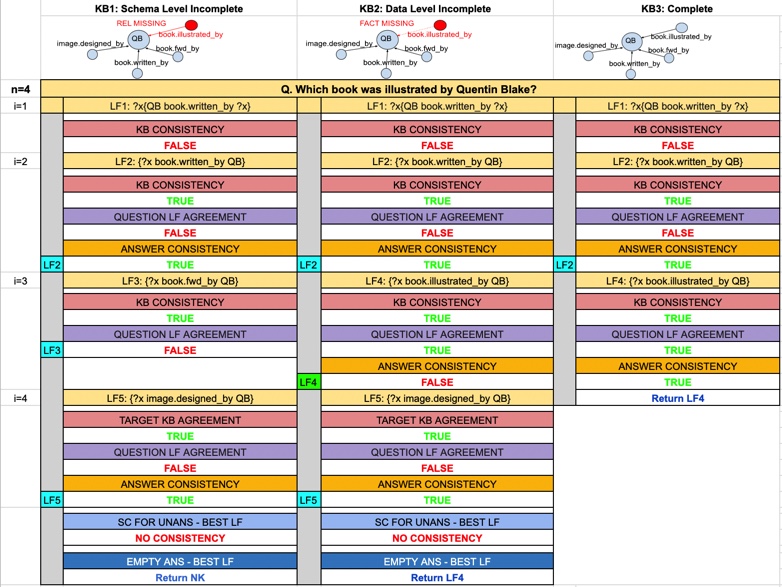Robust Few-shot Transfer Learning for Knowledge Base Question Answering with Unanswerable Questions

0

Sign in to get full access
Overview
- This paper presents a robust few-shot transfer learning approach for knowledge base question answering (KB-QA) that can handle unanswerable questions.
- The proposed model is evaluated on two KB-QA datasets, RetrieveANDGenerator (ReAGe) and ChatKBQA, and outperforms existing few-shot learning methods.
- The model also demonstrates strong performance on the UnkVQA dataset, which tests the ability to detect unanswerable questions.
Plain English Explanation
The paper introduces a new machine learning model that can answer questions about information stored in a knowledge base, even when only a few example questions are provided during training. This is known as a "few-shot" learning approach.
The key innovation is that the model is designed to be robust and can identify when a question cannot be answered using the available knowledge base. This is an important capability, as real-world question answering systems often encounter questions that cannot be satisfactorily answered from the information at hand.
The researchers evaluated their model on several benchmark datasets for knowledge base question answering. They found that it outperformed other few-shot learning methods, demonstrating its ability to effectively transfer learning from a small number of training examples. Importantly, the model also showed strong performance on a dataset that specifically tests the ability to recognize unanswerable questions, indicating its robustness and reliability.
Technical Explanation
The paper presents a novel few-shot transfer learning approach for knowledge base question answering (KB-QA) that can handle unanswerable questions. The proposed model, called Robust Few-shot Transfer Learning for KB-QA (RFT-KB-QA), consists of a question encoder, a knowledge base encoder, and a retrieval and generation module.
The question encoder maps the input question to a dense vector representation. The knowledge base encoder encodes the entities and relations in the knowledge base into vector representations. The retrieval and generation module then selects the most relevant entities and relations from the knowledge base to generate an answer to the question.
Importantly, the model is designed to identify when a question cannot be answered using the available knowledge base. This is achieved by incorporating an abstention mechanism that allows the model to output a "no-answer" response when confidence in the generated answer is low.
The researchers evaluate their model on two KB-QA datasets, RetrieveANDGenerator (ReAGe) and ChatKBQA, as well as the UnkVQA dataset, which tests the ability to detect unanswerable questions. The results show that their model outperforms existing few-shot learning methods on these benchmarks, demonstrating its effectiveness and robustness.
Critical Analysis
The paper presents a well-designed and rigorously evaluated few-shot transfer learning approach for KB-QA that can handle unanswerable questions. The incorporation of an abstention mechanism is a particularly important contribution, as the ability to recognize when a question cannot be answered is a crucial capability for practical question answering systems.
However, the paper does not address some potential limitations of the approach. For example, the model's performance may be sensitive to the quality and coverage of the underlying knowledge base, which could be a significant constraint in real-world applications. Additionally, the paper does not explore the model's ability to handle complex, multi-hop reasoning or questions that require combining information from multiple sources.
Furthermore, the paper could have provided more insight into the model's internal workings and the reasons for its strong performance. A deeper analysis of the model's strengths and weaknesses, as well as potential areas for future improvement, would have strengthened the overall contribution.
Conclusion
Overall, this paper presents a promising approach to few-shot transfer learning for knowledge base question answering that demonstrates robust performance, particularly in its ability to detect unanswerable questions. The proposed model's strong results on benchmark datasets suggest that it could be a valuable contribution to the field of question answering, with potential applications in areas such as customer service, information retrieval, and conversational AI. Further research to address the identified limitations and explore the model's broader capabilities would be a valuable next step.
This summary was produced with help from an AI and may contain inaccuracies - check out the links to read the original source documents!